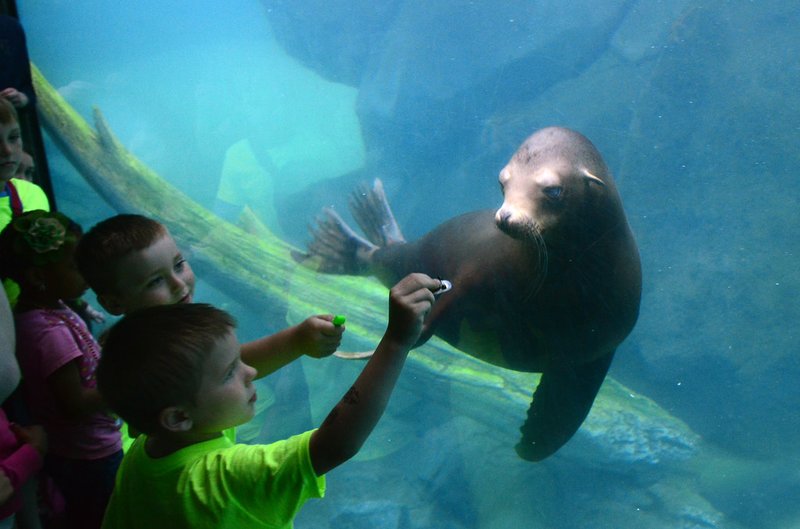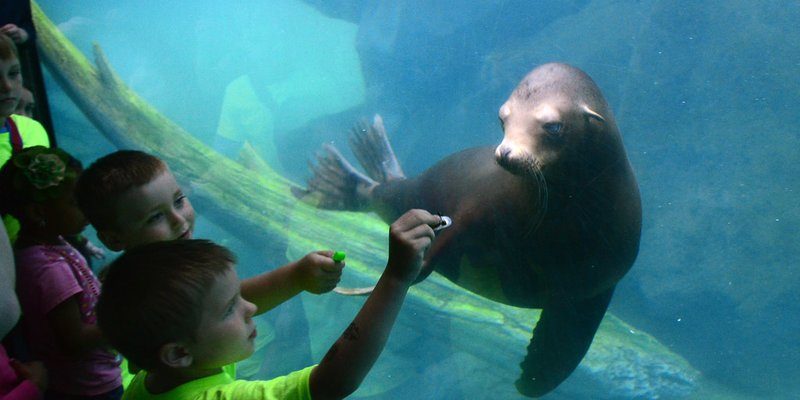
In this article, we’ll explore whether humans can safely interact with sea lions. We’ll talk about when it’s okay to get close, what precautions to take, and why these adorable marine mammals deserve our respect. Put on your imaginary snorkeling gear, and let’s dive in!
Understanding Sea Lion Behavior
Sea lions are fascinating creatures with distinct personalities. They’re social animals, often found in groups, communicating through barks, growls, and even vocalizations that sound surprisingly like laughter. But don’t let their playful demeanor fool you. Sea lions can be quite territorial, especially during breeding season when they become more aggressive to defend their space.
Here’s the thing: their behavior can vary widely. Some sea lions are curious and friendly, while others might avoid contact altogether or even show signs of aggression if they feel threatened. Understanding these nuances is crucial if you’re considering an interaction. So, ensuring you respect their space and observe from a distance is essential. When you’re out in the wild or visiting a sanctuary, pay attention to their body language—if they’re barking at you or moving away, it’s best to give them some room.
Is It Safe to Approach Sea Lions?
While sea lions are cute and fascinating, approaching them is a big decision. It’s like trying to hug a giant dog—while some may enjoy the company, others might see your enthusiasm as a threat. Generally, it’s not safe or advisable to approach wild sea lions. Marine mammal protection laws often prohibit getting too close; in the U.S., for example, you can’t come closer than 150 feet. This distance helps protect both you and the sea lions by minimizing stress and potential danger.
In planned interactions at marine parks or rehabilitation centers, trained professionals ensure safety for both humans and animals. You might participate in programs designed for education and conservation. These experiences often include guidelines to follow, ensuring you understand how to interact without causing harm. Always choose reputable facilities that prioritize animal welfare.
What Precautions to Take When Interacting with Sea Lions
If you do find yourself in a situation where you can interact with sea lions—such as a guided tour—here are some helpful precautions to consider:
- Keep your distance: Respect the recommended distance guidelines to ensure both your safety and theirs.
- Don’t feed them: Feeding wild sea lions can lead to dangerous situations for you and them. It can change their natural behavior and dependency on humans.
- Stay calm: If a sea lion approaches you, remain calm. Sudden movements can startle them and lead to unpredictable behavior.
- Observe quietly: Enjoy watching them without making loud noises or sudden movements that could distress them.
If you’re ever unsure, it’s always helpful to ask your guide or the staff at marine facilities for advice on how to handle an encounter safely.
Common Misconceptions About Sea Lion Interactions
There are a lot of myths about sea lions that can lead to misunderstandings when it comes to interaction. One common misconception is that all sea lions are friendly and playful. While they can be social and curious, each animal has its unique personality and mood. Thinking every encounter will be a playful one can lead to risky situations.
Another misconception is that if a sea lion is resting on the beach, it’s okay to approach it. In reality, resting is a vital part of their daily routine. Approaching a resting sea lion can cause it stress or provoke an aggressive response. Remember, just because they look cute doesn’t mean they want company!
Benefits of Safe Interactions with Sea Lions
When done correctly, safe interactions can have significant benefits for both humans and sea lions. For one, they can foster a deeper understanding of marine life and conservation efforts. Engaging responsibly with these animals often involves educational programs that teach participants about their behavior, habitat, and the environmental challenges they face.
Additionally, these interactions can help promote awareness about the importance of protecting their habitats. When people see sea lions up close, they may become more invested in conservation efforts and advocacy for cleaner oceans and protected marine environments.
In essence, responsible interactions can lead to a strong commitment to marine conservation, benefiting not just sea lions but all ocean life.
Interacting with sea lions can be a delightful experience, but it comes with its set of responsibilities. Understanding their behavior, respecting their space, and valuing their well-being are essential to keeping both parties safe. Whether you’re lucky enough to see them in the wild or participate in a conservation program, the key is to approach these magnificent mammals with respect and care.
So, the next time you find yourself near a sea lion, take a moment to appreciate their playful spirit from a safe distance. After all, they are wild animals, and we share this beautiful planet with them. Let’s do our best to protect and honor their space!

